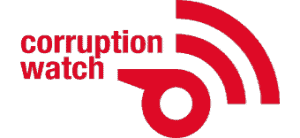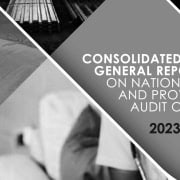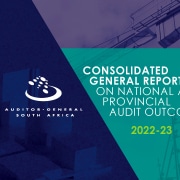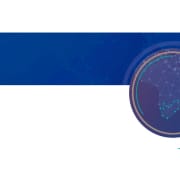|
Getting your Trinity Audio player ready...
|
It is common cause that South Africa’s public procurement framework is long overdue for reform. There are several issues that have vexed procurement practitioners in recent years, such as fragmentation of the various laws, the strain put on the preferential procurement regime, and the urgent need for professionalisation of the sector.
These issues, and more, were confirmed in a recently released – and very comprehensive – assessment of the South African procurement system, under the umbrella of the Methodology for Assessing Procurement Systems (MAPS). This is an international standard and universal tool to evaluate, in its entirety, any public procurement system anywhere in the world. The tool was developed in 2003 by a joint initiative of the World Bank and the Development Assistance Committee, which is based at the Organisation for Economic Co-operation and Development’s (OECD).
MAPS was revised in recent years to keep up with evolving procurement challenges.
In late November the Paris-based OECD, which is home to the MAPS secretariat, released its report pertaining to South Africa. Conducted by the OECD, the World Bank, and the African Development Bank and assisted by the National Treasury, the assessment’s primary goal was to evaluate the current state of public procurement and identify areas for improvement.
The 403-page document goes into great depth, in accordance with the MAPS methodology which consists of four overarching pillars:
- I – Legislative, Regulatory, and Policy Framework.
- II – Institutional Framework and Management Capacity.
- III – Procurement Operations and Market Practices.
- IV – Accountability, Integrity, and Transparency of the Public Procurement System.
Each pillar includes indicators, qualitative and quantitative sub-indicators, and assessment criteria.
“The primary objective of this assessment,” says the report, “is to provide an evidence-based evaluation of progress achieved throughout successive procurement reforms while identifying opportunities to further strengthen the South African public procurement system across all four pillars of the MAPS.”
Officials and practitioners in the South African public administration, public institutions, oversight agencies, representatives of business associations, and private-sector stakeholders were “open and frank interview partners” in conducting the exercise.
Overall, the assessment found that while South Africa has made some progress in procurement reforms, significant improvements are needed across all four pillars. The report identified challenges including systemic corruption, institutional weaknesses, e-procurement limitations, and issues with integrity and anti-corruption measures.
The main recommendations are to consolidate and simplify procurement regulations; improve e-procurement systems; enhance transparency and monitoring; strengthen anti-corruption measures; develop comprehensive sustainable procurement strategies; and professionalise supply chain management.
The report also points out that a single body with the primary responsibility of preventing corruption would be far more effective than the current fragmented “multi-agency” approach, which proved profoundly ineffective during the state capture years. It also notes that state capture corruption crippled law enforcement and prosecution authorities, which have not fully recovered.
Procurement integrity
For Corruption Watch especially, given our growing body of work in monitoring the public procurement space, Pillar IV produces some thought-provoking results.
This pillar looks at elements that are considered necessary for a system to operate with integrity, the report says. “These include appropriate controls that support the implementation of the system in accordance with the legal and regulatory framework, and that have appropriate measures in place to address the potential for corruption in the system.”
Pillar IV also aspects of the procurement system that include stakeholders such as civil society as part of the control system.
Overall, the report finds, South Africa’s public procurement framework provides for control and audit in the Public Finance Management Act, while the Auditor-General of South Africa exercises oversight through external audits.
“The country also presents multiple institutions with a mandate to deal with anti-corruption. The National Anti-Corruption Strategy 2020-2030 provides a framework for efforts to tackle anti-corruption. Civil society is actively engaged in consultation processes around public procurement reforms. The review of procurement procedures happens through the court system.”
However, several areas for improvements are highlighted below:
- Limited transparency of the procurement system hampers civil society’s role in providing effective oversight, preventing comprehensive data analytics of procurement transactions. Direct participation of civil society in public procurement activities is very limited, but institutionalisation of such participation would strengthen integrity.
- There are systemic weaknesses in the control system, including shortcomings in the execution of accounting officers/accounting authorities in, for example, following up on audit findings. Another weakness is the lack of consequence management and reluctance to respond to identified audit recommendations. Other weaknesses include growing levels of irregular expenditure, and a failure to support SCM practitioners with practical hands-on manuals for the implementation of the Internal Audit Framework.
- Available procedures and related time scales for dealing with complaints do not guarantee an effective and efficient process, while there is lack of trust in the system and limited transparency about the publication of decisions.
- The anti-corruption system is inadequate to face the challenges it is confronted with. First and foremost, South Africa lacks a single body with the primary responsibility of preventing corruption, and the fragmented “multi-agency” approach was ineffective during the state capture years. Law enforcement and prosecution authorities are struggling to get back to full capacity after the state capture years, contributing to an environment of impunity, which confirms the private sector’s perception (50% of respondents in the MAPS private sector survey) that previous and existing anti-corruption measures do not work.
- There are limited mechanisms to detect and prevent corruption risks in public procurement because of gaps in the overall anti-corruption framework. In addition, there are gaps in effective mechanisms to prevent and detect red flags, attributed to low levels of digitalisation and use of analytics; weak internal control and internal audit capacity; and lack of clarity in the system of reporting allegations.
- Procurement stakeholders are afraid to blow the whistle, having previously noted credible threats to the lives of those who have come forward with allegations.
- Financial disclosure rules are not sufficiently comprehensive as they only target senior civil servants and do not cover family interests, while the definition of conflict of interest is too narrow. The code of conduct is not presented in a user-friendly format and no mandatory training is conducted for civil servants.
These are significant deficiencies which have contributed to the relentless corruption in public procurement, which government seems incapable of curbing.
Addressing these systemic issues, and the ones listed below, is crucial for reducing corruption, improving service delivery, and ensuring value for money in public spending.
Findings in other pillars
Pillar I:
This section assesses the existing legal, regulatory, and policy framework for public procurement, and how they compare to international standards, considering those international obligations and national policy objectives which ensure that public procurement lives up to its important strategic role and contributes to sustainability.
South Africa’s current legal and regulatory framework for public procurement is extensive, complex, and fragmented, says MAPS, adding that the new Public Procurement Act has been signed into law.
However, the report identified numerous areas for improvement:
- There is no single, clear and unambiguous list or definitions of available procurement methods with associated conditions for use applicable to the procurement of goods, services, consulting services, and construction-related procurement (works and works-related).
- No minimum timeframes for the submission of bids are specified for procurement methods other than open competitive bidding, again opening up the possibilities of inconsistency in application.
- Accounting officers/accounting authorities (AOs/AAs) have a high level of discretion in deciding whether to debar a supplier from doing business with the government by inclusion in the Restricted Supplier List.
- The procurement regime applying to goods and services does not clearly provide for the use of price and non-price attributes and/or consideration of life cycle cost or total cost of ownership.
- There is no comprehensive list of procurement records required to be retained at the operational level by organs of state.
- Standard contract conditions are not suitable for all types of purchasing and have not been updated recently.
- There is no comprehensive, up-to-date user’s guide or procurement manual for organs of state detailing all procedures for the correct implementation of procurement regulations and laws.
- There is no single sustainable public procurement policy (SPP)/strategy and implementation plan to draw together and address all aspects of sustainable public procurement – economic, social and environmental – as a coherent whole and in line with national priorities and policy objectives. A critical review of the effectiveness of current measures for empowerment, and economic and industrial growth through public procurement should be conducted as part of the SPP strategy development process.
Pillar II:
Pillar II assesses how the procurement system defined by the legal and regulatory framework in a country operates in practice through the institutions and management systems that make up overall governance in its public sector.
Overall, the report says, the South African public procurement system provides for the necessary public procurement functions and institutions covered in this pillar. But again, there are several ways in which this could be improved:
- Recent rules and ongoing practices could put at risk the attractiveness of competitive tenders in South Africa.
- The reinforcement of the authoritative standing of the regulatory function can only be addressed with sufficient human resources.
- The absence of vertical integration with other e-government systems and minimal horizontal integration contribute to a very fragmented e-procurement landscape.
- Extremely limited insights on procurement activity are caused by the very low compliance of organs of state with mandatory publication requirements and hinder adequate monitoring of the performance of the public procurement system.
- The professionalisation of the supply chain management function remains limited and principally lacks stewardship.
Pillar III:
Pillar III looks at the operational efficiency, transparency, and effectiveness of the procurement system at the level of the implementing entity responsible for managing individual procurements i.e. state entities. “This pillar focuses on how the procurement system in a country operates and performs in practice.”
As before, the report makes several suggestions for improvement:
- Gaps in market research and environmental considerations indicate a need for a more robust approach to initial procurement stages.
- Challenges in confidentiality, insufficient bid preparation time, and transparency in the evaluation process suggest areas for significant improvement.
- Weaknesses in contract execution, including frequent delays and limited information transparency, underscore the urgency for better contract delivery monitoring and stakeholder engagement.
- Persistent transparency issues and insufficient capacity building for the private sector highlight critical gaps in stakeholder inclusivity.







